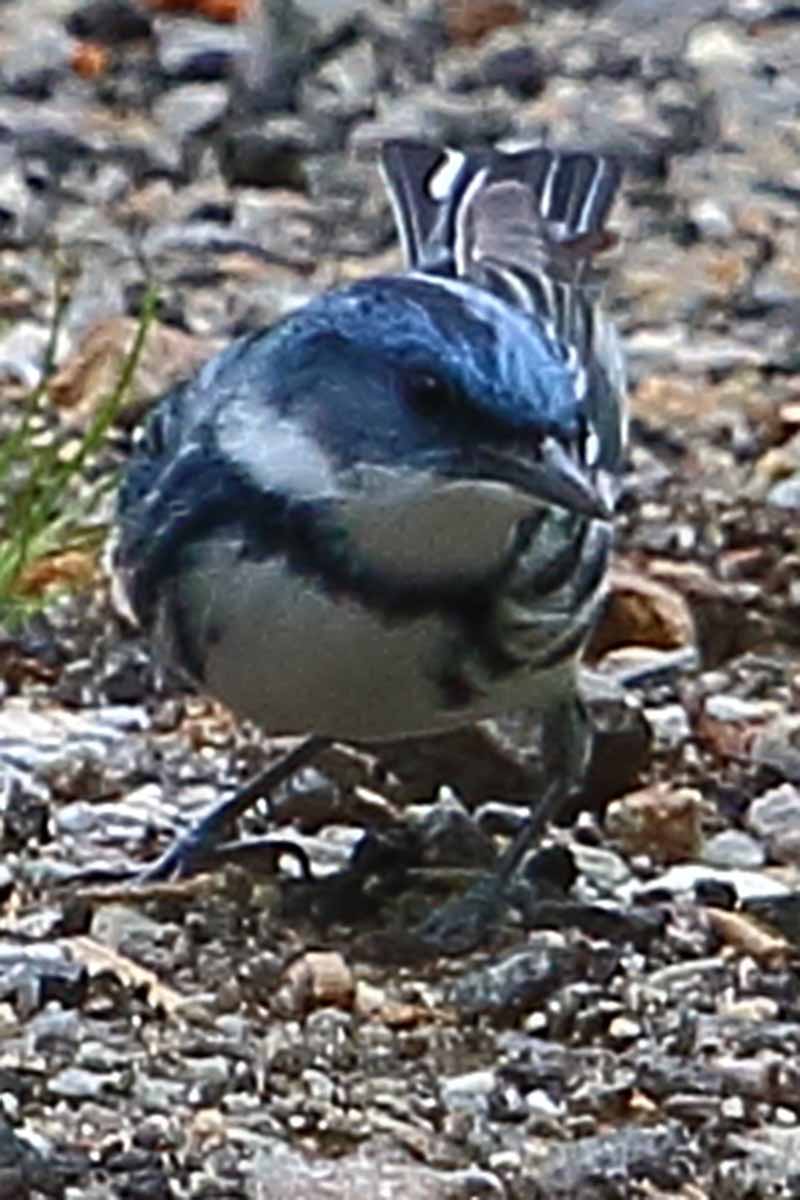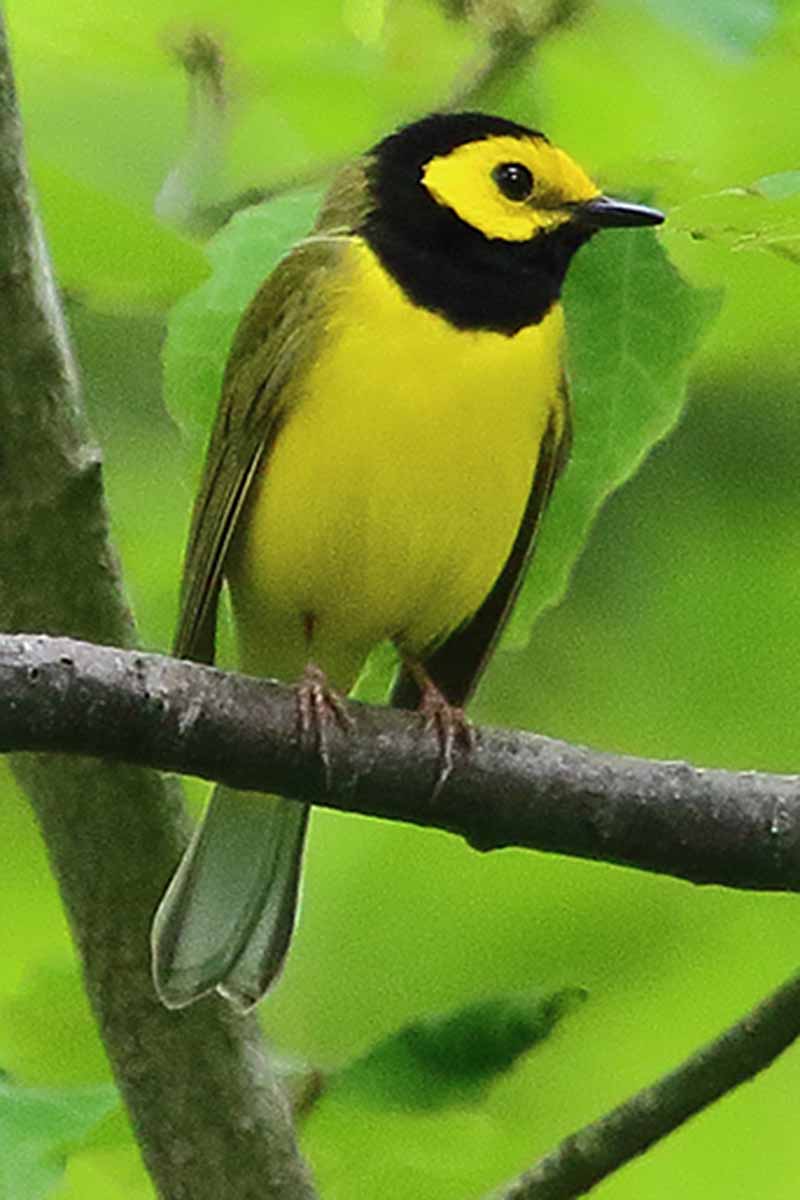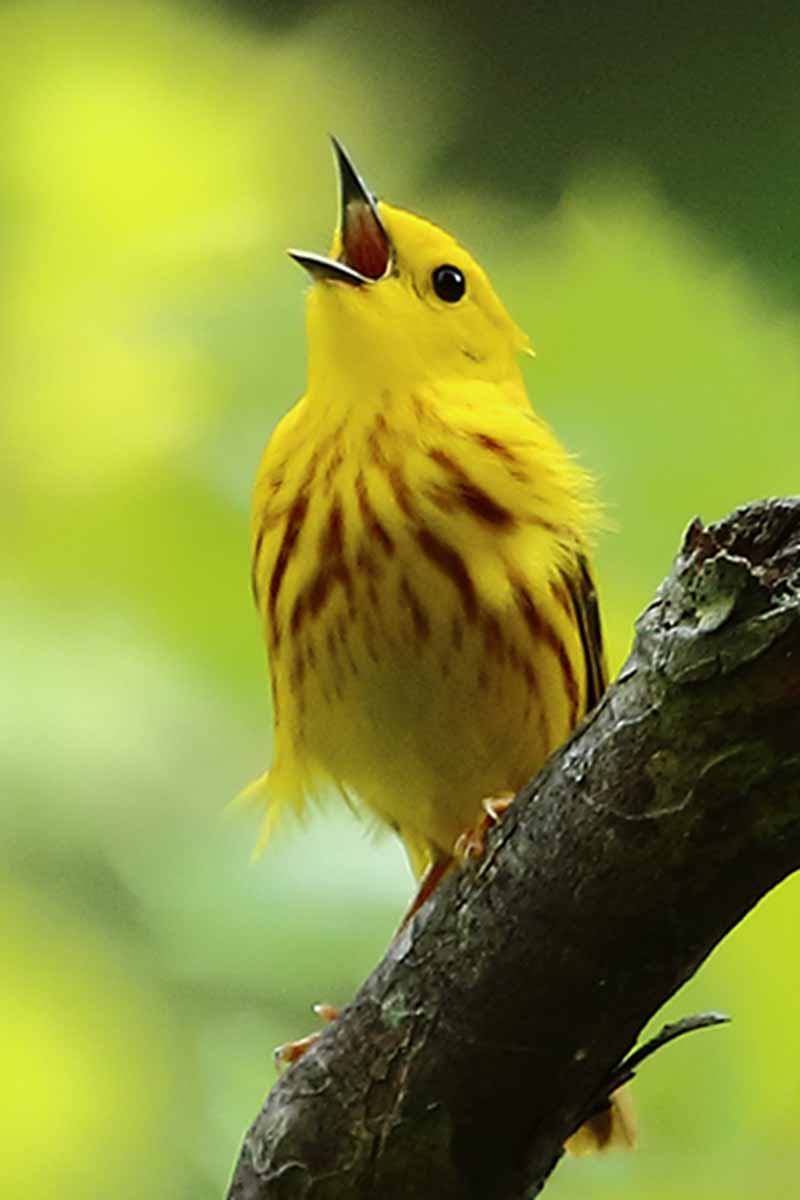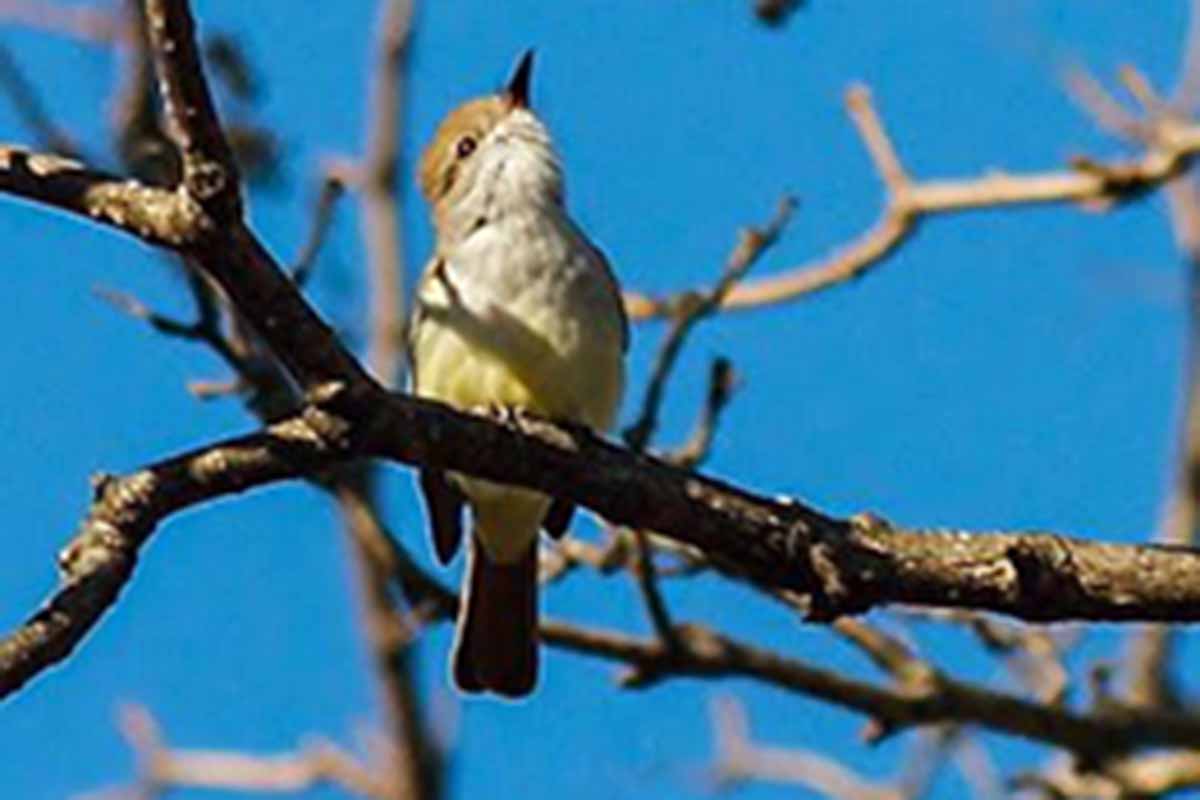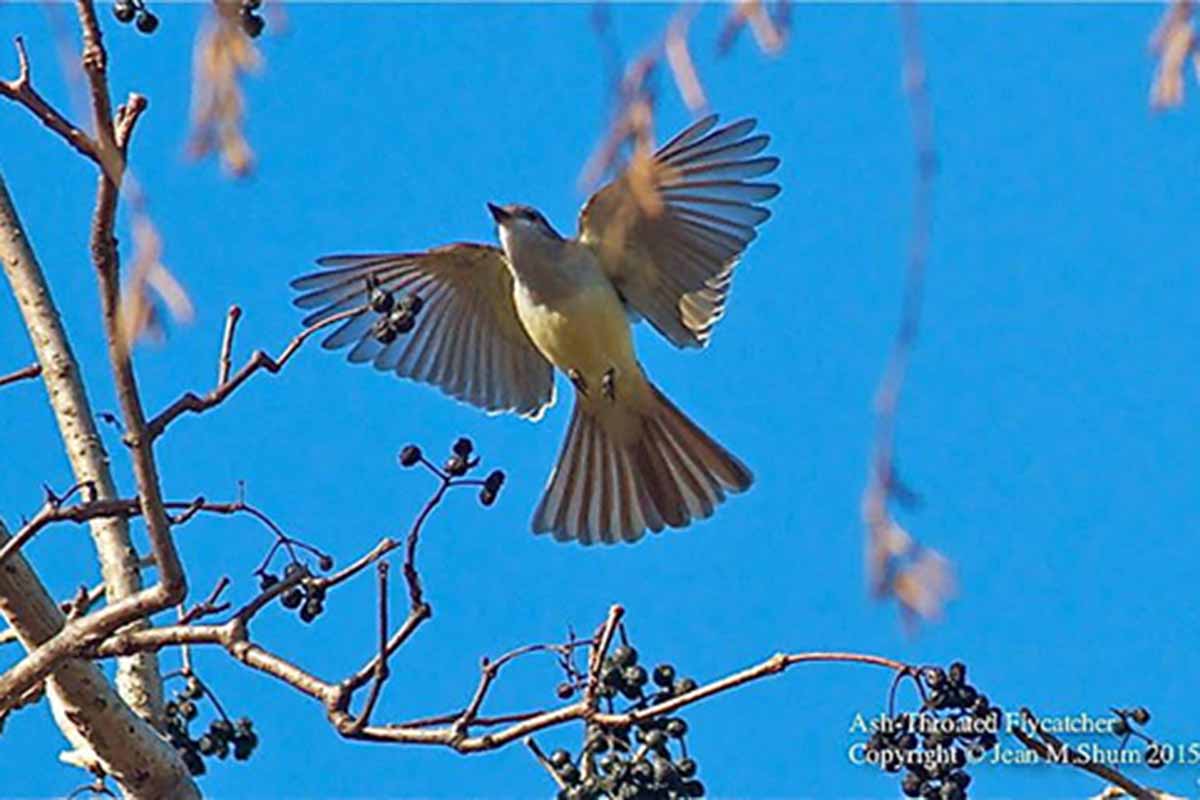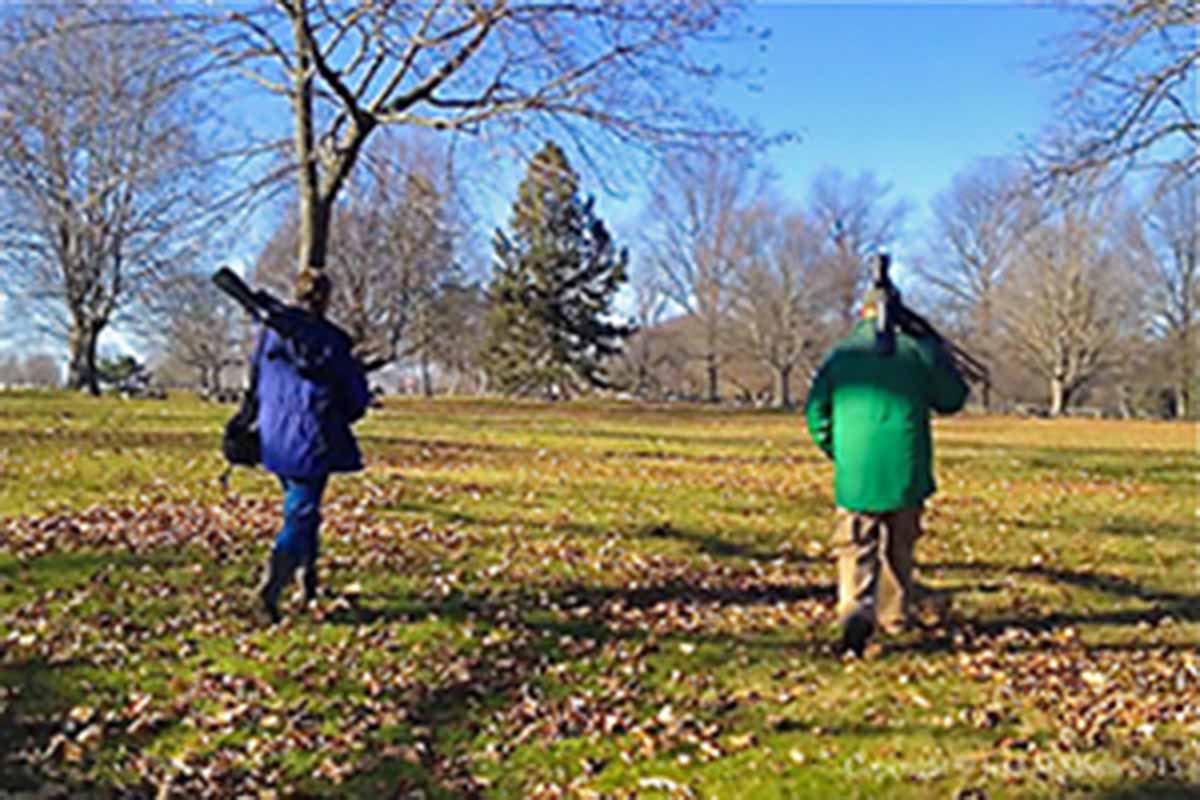March 18, 2015
Registrar: Louise Fraza
Participants: 7
Bird Species: 150
Day 1. We met our trip leader, Rick Wright, at breakfast on the morning of March 13 at the Tucson Airport Hampton Inn, all of us having flown in the day before. The weather was pleasant with a mixture of sun and clouds. After driving for a good hour we stopped at the Amado Sewage Farm pond. Some construction was in progress there and we had to strain to get scoped looks at the waterfowl. A Pacific Loon stood out even though it was sleeping with its head tucked in. We then stopped at the site of a hawk watch near the town of Tubac. There we found a crowd of people with scopes due to an ongoing birding festival. We were lucky to arrive when two low-flying Common Black Hawks flew over, clearly showing their distinctive silhouette of long wings and short tails. Some of us also saw a Golden Eagle. We took a walk along the green banks of the Santa Cruz River where we admired some of the more common local birds. Rick, who until a few years ago was a Tucson resident, pointed out the field marks and names of the prevalent regional subspecies. The Arizona Northern Cardinal, for example, has a larger bill and a longer, bushier crest and goes by the name of “Superb”. The White-breasted Nuthatch we saw was the “Nelson” subtype, which has more white on the face and a smaller black stripe on the top of the head. This made us realize the need to look more carefully at the birds we see round us every day. Our next stop was the Paton’s House at Patagonia, a former private residence with marvelous bird feeders which is now managed by the Tucson Audubon Society. The feeders were generally quiet but we had some “ooh and aah” moments when the Rufous and Anna’s Hummingbirds showed us their gorgets.
After lunch in the town of Patagonia, we drove to the Cienaga Resource Conservation Area near Sonoita. Here we drove though typical Chihuahuan desert habitat – vast expanses of yellow, dry grasses interspersed with some low bushes. It is quite different from the cactus-rich Sonoran desert near Tucson but with the mountains in the background, hauntingly beautiful. We soon started to see flocks of small birds as we drove along and eventually we all managed to get close looks at the Vesper Sparrows which were migrating through the area by the hundreds. We reached the town of Willcox, our lodgings for the next two nights, in the evening. After checking in at our motel, we visited the local sewage pond where a great surprise awaited us. While watching the sunset, groups of cranes suddenly lifted into the sky from a nearby field. New groups kept coming and coming as the sky turned shades of violet and magenta, and a long freight train rode underneath.
Day 2. We visited the town of Portal in the Chiricahua Mountains. This is a picturesque town with a tiny old post office building, and houses with gardens and lots of bird feeders. It was a lively morning and we had close looks at several of the typical birds of the area such as Canyon, Spotted and Green-tailed Towhees, Gambel’s Quail, White-winged Dove, Acorn, Gila and Ladder-backed Woodpeckers, Bewick’s Wren, Audubon’s Yellow-rumped Warbler, White-crowned and Black-throated Sparrow, Lark Bunting, and Yellow-eyed Junco. We also studied a Cassin’s Finch, which was a life bird for several of us. While we were birding, the “natives” were getting ready for their St. Patrick’s Day Parade, which included dressed up donkeys and horses. It had been pleasant and sunny in Portal, but our next destination, Rustler Park at about 9,000 feet made us grateful for the extra clothing we were wearing. It was windy and mostly cloudy up there and the pines were rustling, but the orange head and breast of an unexpected Olive Warbler lifted everyone’s spirits. That was before the even more unexpected Williamson’s Sapsucker showed up. After a vain search for the Pygmy Nuthatch, we returned to Portal for a late lunch and then made the drive back to Willcox. Here we treated ourselves again to the sunset crane spectacle before a delicious Mexican dinner.
Day 3. After an early morning visit to the Willcox Sewage pond, we drove through a large agricultural area where one of the nest boxes on poles along Windsong Road revealed a sleepy barn owl. Near a farm building, perched on the farm equipment and the road were dozens of Yellow-headed Blackbirds. Their heads gleamed in the morning sun like so many headlights. We passed by feedlots with tens of thousands of cattle which was a distressing sight even for some of the non vegetarians in our group. Our next stop was White Water Draw. There was a pair of Great Horned Owls nesting in a nearby high ceilinged shed. Rick, always protective of birds’ wellbeing, did not call our attention to this but we took a few quick pictures, nevertheless, while trying not to disturb the owls. The sun was nice and warm as we walked on the dikes along the impoundments but the wind was strong. We found several of, for us, exotic species in the water such as Cinnamon Teal, White-faced Ibis, American Avocets and Black-necked Stilts as well as the more familiar water birds. On the way back to Tucson we relaxed on the chaise-lounges at Mary Joe Ballatar’s Ash Canyon B&B near Sierra Vista. Her garden has well-stocked feeders of all kinds. It was still early in the year for many of the hummingbirds but we did enjoy great looks at Magnificent and Anna’s. There were some interesting mammals such as the Yellow-nosed Cotton Rats below the feeders and a family of Rock Squirrels on the boughs of a nearby American Sycamore. We came away with recipes for peanut butter/lard cakes and a supplier for the unique feeders Mary Joe has.
Day 4. After a successful early morning stop at the airport Burrowing Owl site near our hotel, we visited Catalina State Park with its Sonoran Desert habitat. It was spring break for the local schools and the park was very busy. Rick took us to a lively spot where he took part in a big sit one fall birdathon, tallying 50 species. We saw Canyon and Abert’s Towhees there as well as Rufous-winged and Lark Sparrows, Lucy’s Warblers, Verdins and Bushtits. We took a nice hike and admired the desert scenery. By then the day had turned hot and sunny and the birds already seemed to be on their siesta. In the afternoon we visited the Sweetwater Wetlands, a waste water treatment project that is also a park. It lived up to its reputation as one of the best places to find the elusive Sora. We had two of them, very close in broad daylight. So far our pace had been a bit hectic with early mornings, long van rides and birding till dark. Today we enjoyed a leisurely break before dinner.
Day 5. After another peek at the Burrowing Owls, we visited McDonald Park on our way to Mount Lemmon. On the way up we stopped at the Gordon Hirabayashi Recreation Area, where people of Japanese descent were detained during World War II. As we ascended the vegetation changed from Sonoran desert to pine woodland. It is a dramatic ascent along stone columns which have been sculpted by the wind to resemble Easter Island type heads and other fabulous giants. A stop at Rose Canyon produced a pair of Olive Warblers, the bird we had been told not to expect, as well as the sought for Pygmy Nuthatches. There was also plenty of opportunity for Rick to continue his explanation of the different juncos. The Yellow-Eyed and the different races of Dark-eyed such as the Pink-sided, the Grey-headed and the Oregon were all present there.
Day 6. This morning’s destination was Madeira Canyon in the Santa Rita Mountains. The day quickly became cloudy and a light drizzle broke out as we were watching the feeders near the gift shop. Some new trip birds we saw there were Hepatic Tanager and Arizona Woodpecker. We were all impressed and amused by a male Wild Turkey displaying for a group of females. After a while the rain became a downpour and we left in search of a drier area which we found in Montosa Canyon to the south of Madeira. The sun even came out but the dark clouds remained on the Santa Rita mountains. In the early afternoon we dropped off two of our trip mates at the airport after which we continued on to Reid Park, one of Tucson’s city parks that has several ponds. Our new birds there included Marsh Wren and House Wren and a good look at Black Phoebe for those who missed it before. Rick pointed out some bizarre looking ducks which he explained were Mallards that were selectively bred to encourage certain characteristics, such an ability to dive or to grow a crest. Altogether we tallied 152 number of species for the trip.
Species Lists
Birds
Wood Duck
Blue-winged Teal
Cinnamon Teal
Northern Shoveler
Gadwall
American Wigeon
Mallard
Northern Pintail
Green-winged Teal
Ring-necked Duck
Lesser Scaup
Ruddy Duck
Gambel’s Quail
Wild Turkey
Pied-billed Grebe
Rock Pigeon
Eurasian Collared-Dove
Inca Dove
White-winged Dove
Mourning Dove
Greater Roadrunner
White-throated Swift
Rivoli’s Hummingbird
Black-chinned Hummingbird
Anna’s Hummingbird
Costa’s Hummingbird
Rufous Hummingbird
Broad-billed Hummingbird
Sora
Common Gallinule
American Coot
Sandhill Crane
Black-necked Stilt
American Avocet
Killdeer
Dunlin
Least Sandpiper
Long-billed Dowitcher
Spotted Sandpiper
Greater Yellowlegs
Ring-billed Gull
Pacific Loon
Neotropic Cormorant
Great Blue Heron
Great Egret
Green Heron
Black-crowned Night-Heron
White-faced Ibis
Black Vulture
Turkey Vulture
Golden Eagle
Northern Harrier
Cooper’s Hawk
Bald Eagle
Common Black Hawk
Swainson’s Hawk
Red-tailed Hawk
Barn Owl
Great Horned Owl
Burrowing Owl
Williamson’s Sapsucker
Red-naped Sapsucker
Acorn Woodpecker
Gila Woodpecker
Ladder-backed Woodpecker
Hairy Woodpecker
Arizona Woodpecker
Northern Flicker (Red Shafted)
American Kestrel
Peregrine Falcon
Prairie Falcon
Gray Flycatcher
Dusky Flycatcher
Black Phoebe
Say’s Phoebe
Vermillion Flycatcher
Ash-throated Flycatcher (h)
Bell’s Vireo (h)
Hutton’s Vireo
Loggerhead Shrike
Mexican Jay
Chihuahuan Raven
Common Raven
Bridled Titmouse
Verdin
Horned Lark
Northern Rough-winged Swallow
Violet-green Swallow
Bushtit
Ruby-crowned Kinglet
Red-breasted Nuthatch
White-breasted Nuthatch (Nelson’s)
Pygmy Nuthatch
Brown Creeper
Blue-gray Gnatcatcher
Black-tailed Gnatcatcher (H)
Canyon Wren
House Wren
Marsh Wren
Bewick’s Wren
Cactus Wren
European Starling
Curve-billed Thrasher
Bendire’s Thrasher
Northern Mockingbird
Western Bluebird
American Robin
Phainopepla
Olive Warbler
House Sparrow
House Finch
Cassin’s Finch
Pine Siskin
Lesser Goldfinch
Rufous-winged Sparrow
Chipping Sparrow
Brewer’s Sparrow
Black-throated Sparrow
Lark Sparrow
Lark Bunting
Dark-eyed Junco (Pink-sided, Gray-headed and Oregon)
Yellow-eyed Junco
White-crowned Sparrow (Gambel’s)
Vesper Sparrow
Savannah Sparrow
Song Sparrow (Falllax)
Lincoln’s Sparrow
Canyon Towhee
Abert’s Towhee
Green-tailed Towhee
Spotted Towhee
Yellow-headed Blackbird
Western Meadowlark
Eastern Meadowlark (Lilian’s)
Red-winged Blackbird
Brown-headed Cowbird
Brewer’s Blackbird
Great-tailed Grackle
Orange-crowned Warbler
Lucy’s Warbler
Common Yellowthroat (H)
Yellow Warbler (Morton’s)
Yellow-rumped Warbler (Audubon’s)
Yellow-rumped Warbler (Myrtle)
Black-throated Gray Warbler
Painted Redstart
Hepatic Tanager
Northern Cardinal (Superb)
Pyrrhuloxia
Mammals
Yellow-nosed Cotton Rat
Desert Cottontail
Black-tailed Jackrabbit
Coyote
Rock Squirrel
Round-tailed Ground Squirrel
Coues’s White-tailed Deer


